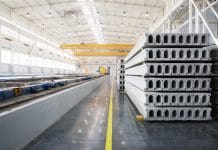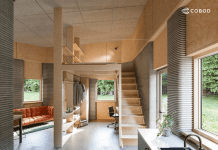The global modular and prefabricated buildings market is set for growth over the next six years, as offsite construction gains traction thanks to its sustainable approach, according to Frost & Sullivan’s recent analysis
A global uptick in construction activities and significant cost, labour, and time savings in offsite construction are key factors driving market revenues toward $215bn (£167bn) by 2025.
With a constantly evolving regulatory landscape, adopting more environmentally sustainable and regulatory-compliant construction practices will boost prospects and revenues in the more mature markets of Western Europe and North America. Frost & Sullivan expects the market to expand at a sturdy CAGR of 6.3% from 2018-2025.
Prathmesh Limaye, senior analyst of chemicals & materials in infrastructure & mobility at Frost & Sullivan, said: “Despite increased construction costs from an offsite construction, a net saving of up to 7% is possible because of shortened construction periods.
“In addition, prefabricated buildings are increasingly being perceived as sustainable solutions for construction projects due to a growing usage of materials, such as timber and aluminium composites, that are more energy-efficient than concrete.”
From a regional perspective, the recovering economies of Latin America along with high-growth markets of Eastern Europe, India, and Southeast Asia are expected to provide lucrative market opportunities. Slower growth is anticipated in North America and Europe due to increased construction activities in developing regions.
From a competitor position, the market is highly fragmented with several regional and smaller suppliers with wide market coverage due to the relative ease of setting up a business in this space. The offsite construction industry is, therefore, slated to experience consolidation with multiple merger and acquisition activities occurring in the foreseeable future.
Limaye added: “Many small and regional participants influence the overall pricing and distribution patterns in regional markets, especially in Latin America, the Middle-East, and Asia-Pacific.”
To gain a competitive advantage, Limaye recommends players emulate innovative companies such as Katerra and Welement, and adopt automation and design tools to increase the quality and precision in their construction.
Additional growth opportunities participants should aim to secure include:
- Manufacturers promoting more cost-effective and environmentally sustainable solutions that are compliant with regulations mandated by international organisations.
- Gaining wider coverage by improving their portfolios with products that can be customised to end-user specifications and also promote ease of installation.
- Expanding operations into high-growth regions such as Asia-Pacific due to the region’s growing infrastructure and construction development.
- Offering products that are comparative with those offered by regional and local manufacturers.
Limaye concluded: “Despite significant market expansion prospects, perceptions surrounding the high initial cost of construction and transportation, design rigidity, multiple stakeholder involvement, and lack of skilled labour are key factors slowing adoption rates and hindering market growth.”













